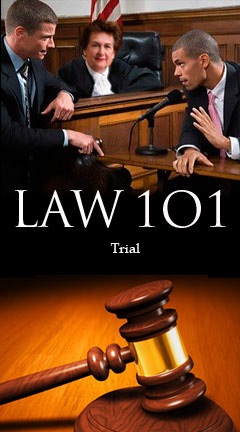Archival Notice
This is an archive page that is no longer being updated. It may contain outdated information and links may no longer function as originally intended.
Home | Glossary | Resources | Help | Course Map
Learning Objectives
After completing Trial, the user should know:
- The definitions of trial and fact finder.
- The essence of a trial.
- How to differentiate between types of evidence.
- When an expert witness is permitted to give opinion in testimony.
- What makes evidence admissible.
- The parameters of motion in limine and sequestration.
- The process of voir dire and appreciate its importance.
- The implications of stipulation and hearsay.
- The two factors that govern the design of the direct examination of an expert witness.
- The importance of primacy and recency in direct examination.
- The differences in conducting direct and cross-examination.
- The process of witness examination.
- Jury instructions.
Additional Online Courses
- What Every First Responding Officer Should Know About DNA Evidence
- Collecting DNA Evidence at Property Crime Scenes
- DNA – A Prosecutor’s Practice Notebook
- Crime Scene and DNA Basics
- Laboratory Safety Programs
- DNA Amplification
- Population Genetics and Statistics
- Non-STR DNA Markers: SNPs, Y-STRs, LCN and mtDNA
- Firearms Examiner Training
- Forensic DNA Education for Law Enforcement Decisionmakers
- What Every Investigator and Evidence Technician Should Know About DNA Evidence
- Principles of Forensic DNA for Officers of the Court
- Law 101: Legal Guide for the Forensic Expert
- Laboratory Orientation and Testing of Body Fluids and Tissues
- DNA Extraction and Quantitation
- STR Data Analysis and Interpretation
- Communication Skills, Report Writing, and Courtroom Testimony
- Español for Law Enforcement
- Amplified DNA Product Separation for Forensic Analysts
Date Created: August 7, 2023


